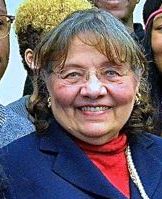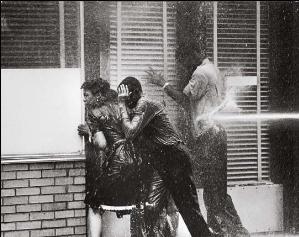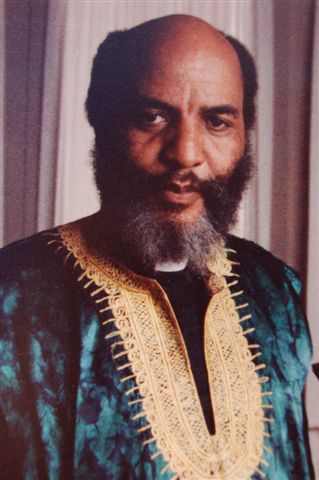Related Research Articles

The civil rights movement was a social movement and campaign from 1954 to 1968 in the United States to abolish legalized racial segregation, discrimination, and disenfranchisement in the country. The movement had its origins in the Reconstruction era during the late 19th century and had its modern roots in the 1940s, although the movement made its largest legislative gains in the 1960s after years of direct actions and grassroots protests. The social movement's major nonviolent resistance and civil disobedience campaigns eventually secured new protections in federal law for the civil rights of all Americans.

The "Letter from Birmingham Jail", also known as the "Letter from Birmingham City Jail" and "The Negro Is Your Brother", is an open letter written on April 16, 1963, by Martin Luther King Jr. It says that people have a moral responsibility to break unjust laws and to take direct action rather than waiting potentially forever for justice to come through the courts. Responding to being referred to as an "outsider", King writes: "Injustice anywhere is a threat to justice everywhere."

The Southern Christian Leadership Conference (SCLC) is an African-American civil rights organization based in Atlanta, Georgia. SCLC is closely associated with its first president, Martin Luther King Jr., who had a large role in the American civil rights movement.

Theophilus Eugene "Bull" Connor was an American politician who served as Commissioner of Public Safety for the city of Birmingham, Alabama, for more than two decades. A member of the Democratic Party, he strongly opposed the Civil Rights Movement in the 1960s. Under the city commission government, Connor had responsibility for administrative oversight of the Birmingham Fire Department and the Birmingham Police Department, which also had their own chiefs.
Arthur George Gaston was an American entrepreneur who established businesses in Birmingham, Alabama. He had a significant role in the movement to remove legal barriers to integration in Birmingham in 1963. In his lifetime, Gaston's companies were some of the most prominent African-American businesses in the American South.

Freddie Lee Shuttlesworth was an American civil rights activist who led the fight against segregation and other forms of racism as a minister in Birmingham, Alabama. He was a co-founder of the Southern Christian Leadership Conference, initiated and was instrumental in the 1963 Birmingham Campaign, and continued to work against racism and for alleviation of the problems of the homeless in Cincinnati, Ohio, where he took up a pastorate in 1961. He returned to Birmingham after his retirement in 2007. He worked with Martin Luther King Jr. during the civil rights movement, though the two men often disagreed on tactics and approaches.
Wyatt Tee Walker was an African-American pastor, national civil rights leader, theologian, and cultural historian. He was a chief of staff for Martin Luther King Jr., and in 1958 became an early board member of the Southern Christian Leadership Conference (SCLC). He helped found a Congress for Racial Equality (CORE) chapter in 1958. As executive director of the SCLC from 1960 to 1964, Walker helped to bring the group to national prominence. Walker sat at the feet of his mentor, BG Crawley, who was a Baptist Minister in Brooklyn, NY and New York State Judge.

Diane Judith Nash is an American civil rights activist, and a leader and strategist of the student wing of the Civil Rights Movement.
This is a timeline of African-American history, the part of history that deals with African Americans.

The Birmingham campaign, also known as the Birmingham movement or Birmingham confrontation, was an American movement organized in early 1963 by the Southern Christian Leadership Conference (SCLC) to bring attention to the integration efforts of African Americans in Birmingham, Alabama.
The Children's Crusade, or Children's March, was a march by over 5,000 school students in Birmingham, Alabama on May 2–10, 1963. Initiated and organized by Rev. James Bevel, the purpose of the march was to walk downtown to talk to the mayor about segregation in their city. Many children left their schools and were arrested, set free, and then arrested again the next day. The marches were stopped by the head of police, Bull Connor, who brought fire hoses to ward off the children and set police dogs after the children. This event compelled President John F. Kennedy to publicly support federal civil rights legislation and eventually led to the passage of the Civil Rights Act of 1964.

James Luther Bevel was an American minister and leader of the 1960s Civil Rights Movement in the United States. As a member of the Southern Christian Leadership Conference (SCLC), and then as its Director of Direct Action and Nonviolent Education, Bevel initiated, strategized, and developed SCLC's three major successes of the era: the 1963 Birmingham Children's Crusade, the 1965 Selma voting rights movement, and the 1966 Chicago open housing movement. He suggested that SCLC call for and join a March on Washington in 1963. Bevel strategized the 1965 Selma to Montgomery marches, which contributed to Congressional passage of the 1965 Voting Rights Act.
Albert Burton Boutwell was the 19th Lieutenant Governor of Alabama. A Democrat, Boutwell served Governor John Malcolm Patterson of the same political party, from 1959 until 1963. Earlier in his political career he served in the state senate including as senate president.
The Albany Movement was a desegregation and voters' rights coalition formed in Albany, Georgia, in November 1961. This movement was founded by local black leaders and ministers, as well as members of the Student Nonviolent Coordinating Committee (SNCC) and the National Association for the Advancement of Colored People (NAACP). The groups were assisted by Martin Luther King Jr. and the Southern Christian Leadership Conference (SCLC). It was meant to draw attention to the brutally enforced racial segregation practices in Southwest Georgia. However, many leaders in SNCC were fundamentally opposed to King and the SCLC's involvement. They felt that a more democratic approach aimed at long-term solutions was preferable for the area other than King's tendency towards short-term, authoritatively-run organizing.

Why We Can't Wait is a 1964 book by Martin Luther King Jr. about the nonviolent movement against racial segregation in the United States, and specifically the 1963 Birmingham campaign. The book describes 1963 as a landmark year in the civil rights movement, and as the beginning of America's "Negro Revolution".
Milton Louis Grafman was an American rabbi who led Temple Emanu-El in Birmingham, Alabama, from 1941 until his retirement in 1975 and then served as Rabbi Emeritus from 1975 until his death in 1995. He was one of eight local clergy members who signed a public statement criticizing the Birmingham Campaign, to which Martin Luther King Jr. responded in his Letter from Birmingham Jail.
Lola Mae Haynes Hendricks was corresponding secretary for Fred Shuttlesworth's Alabama Christian Movement for Human Rights from 1956 to 1963. She assisted Wyatt Walker in planning the early portions of the Southern Christian Leadership Conference's involvement in the 1963 Birmingham campaign during the Civil Rights Movement.

Frederick Douglas Reese was an American civil rights activist, educator and minister from Selma, Alabama. Known as a member of Selma's "Courageous Eight", Reese was the president of the Dallas County Voters League (DCVL) when it invited the Southern Christian Leadership Conference and Martin Luther King Jr. to Selma to amplify the city's local voting rights campaign. This campaign eventually gave birth to the Selma to Montgomery marches, which later led to the passage of the Voting Rights Act.
This is a timeline of the civil rights movement in the United States, a nonviolent mid-20th century freedom movement to gain legal equality and the enforcement of constitutional rights for people of color. The goals of the movement included securing equal protection under the law, ending legally institutionalized racial discrimination, and gaining equal access to public facilities, education reform, fair housing, and the ability to vote.

Joseph W. Ellwanger Jr. is a Lutheran pastor, author, and civil rights activist. He was a key figure in the Civil Rights Movement in Birmingham, Alabama, and the only white religious leader included in strategy meetings with Martin Luther King Jr.
References
- 1 2 3 4 5 6 7 8 White, Marjorie Longenecker (1998). A Walk to Freedom: The Reverend Fred Shuttlesworth and the Alabama Christian Movement for Human Rights, 1956-1964. Birmingham, Alabama: Birmingham Historical Society. ISBN 0-943994-24-1.
- 1 2 Andrew, Manis (1999). A Fire You Can't Put Out: The Civil Rights Life of Birmingham's Reverend Fred Shuttlesworth. Tuscaloosa, Alabama: University of Alabama Press. ISBN 0-8173-0968-3.
- ↑ "Negroes roar approval at rights meeting" (PDF). Birmingham News . June 6, 1956.
- 1 2 3 4 5 6 7 8 McWhorter, Diane (2001). Carry Me Home: Birmingham, Alabama, The Climactic Battle of the Civil Rights Revolution . New York, New York: Simon and Schuster. ISBN 0-7432-2648-8.
- ↑ "Litigation: The Champion". Time . November 26, 1965. Archived from the original on January 14, 2009.
- ↑ King, Jr, Martin Luther (1964). Why We Can't Wait. New York, New York: Signet. ISBN 0-451-61887-4.
- 1 2 Branch, Taylor (1988). Parting The Waters; America In The King Years 1954-63 . New York, New York: Simon and Schuster. ISBN 0-671-46097-8.
- ↑ Greg Garrison (November 8, 2006). "Civil rights pioneer, 99, was preacher to the end". Birmingham News .